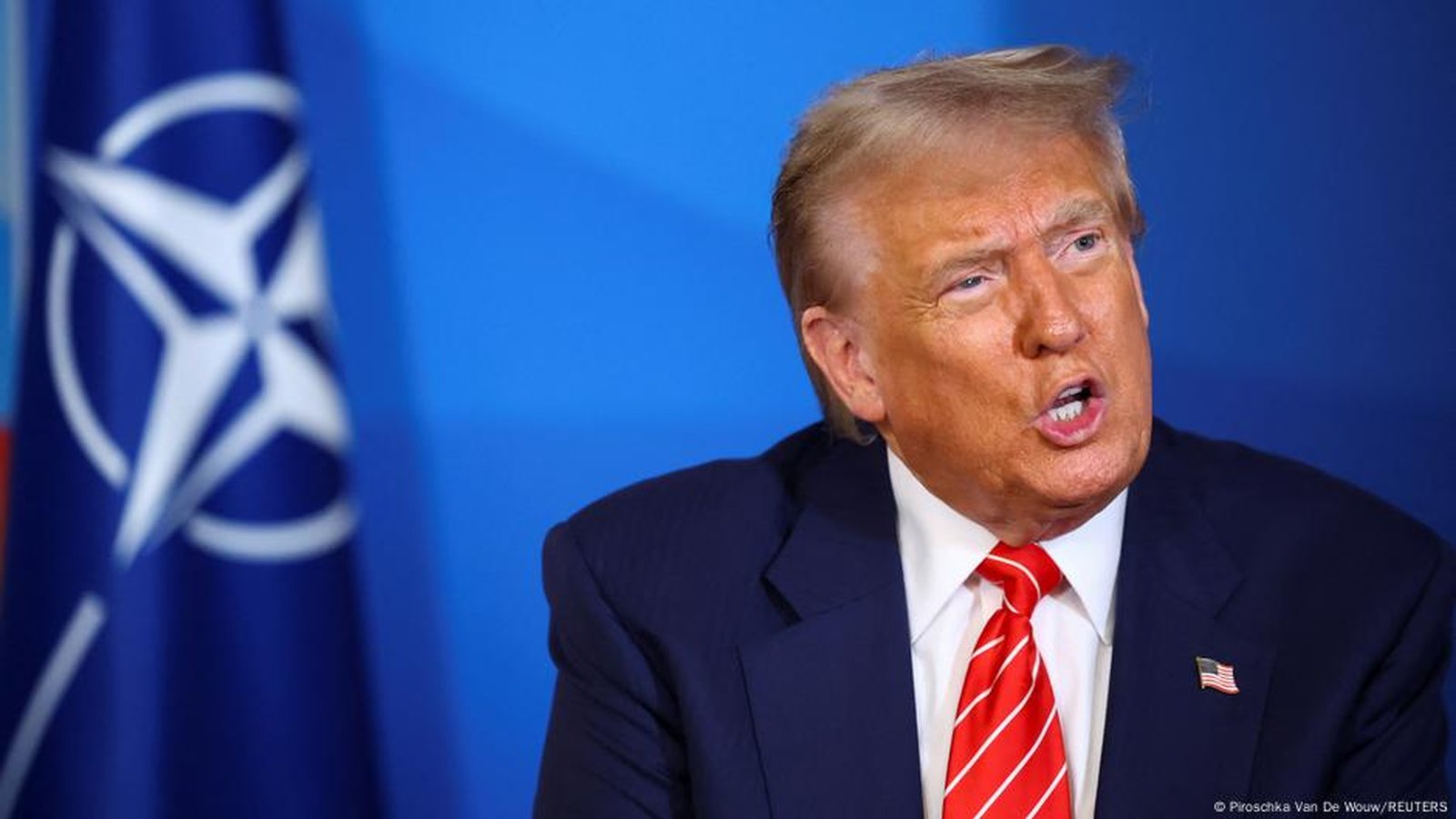The global trade system is once again at a crossroads, this time revolving around a heated debate over whether the European Union (EU) and the North Atlantic Treaty Organization (NATO) can impose tariffs on India and China amid former U.S. President Donald Trump’s renewed push for protectionist policies.
- Trump’s Tariff Push and the Renewed Debate
- The Role of NATO in Economic Policy
- The EU’s Limited but Powerful Trade Authority
- India and China at the Center of Global Trade
- The Legal and Geopolitical Hurdles
- Trump’s Strategic Calculus
- Economic Implications for Global Trade
- Expert Opinions and Perspectives
- The Road Ahead
- FAQs
- Can NATO impose tariffs on India and China?
- Does the EU have the authority to impose tariffs?
- Why is Trump pushing for tariffs on India and China?
- What would be the impact of tariffs on global trade?
- Would India and China retaliate against EU tariffs?
- Conclusion
With Trump’s return to the international spotlight, his calls for tougher trade measures are sparking difficult conversations in Brussels and Washington. The question is not simply about tariffs—it is about geopolitics, legal boundaries, economic resilience, and the evolving balance of power in the 21st century. As the world becomes increasingly multipolar, with India and China rising as economic giants, the debate over tariffs has the potential to reshape alliances, challenge international norms, and alter the very foundation of global trade.
Trump’s Tariff Push and the Renewed Debate
Donald Trump’s presidency was marked by an aggressive trade policy, particularly directed at China. He framed tariffs as a weapon against what he often described as “unfair trade practices” and as a means of protecting American manufacturing. His administration imposed hundreds of billions of dollars in tariffs on Chinese goods, sparking a prolonged trade war that disrupted global supply chains. Now, with his influence still looming large, Trump’s push for similar actions has re-emerged, but with an added twist: he is pressing allies in NATO and the EU to follow suit against both China and India.
This raises fundamental questions: Can NATO, a military alliance, even legally impose tariffs? Can the EU, bound by the World Trade Organization (WTO) rules and its own regulations, act in line with Trump’s demands without violating international agreements? And perhaps most importantly, what would the consequences be for the global economy if tariffs were extended to two of the world’s fastest-growing markets?
The Role of NATO in Economic Policy
At first glance, NATO seems like an unlikely platform for tariffs. Founded in 1949, the alliance was created as a military coalition designed to ensure collective defense against Soviet aggression during the Cold War. Its charter focuses strictly on defense and security, not trade. However, Trump has long argued that NATO should evolve beyond military matters to confront economic threats, particularly those posed by China’s dominance in global markets and technology.
Yet experts note that NATO does not have the institutional authority to impose tariffs. According to Dr. Elisabeth Braw, a transatlantic security analyst, “NATO’s remit is collective security. Any expansion into trade measures would fundamentally change its character and legitimacy.” In practice, NATO could pressure member states politically, but actual tariffs would have to be enacted by individual governments or by the EU as a bloc.
The EU’s Limited but Powerful Trade Authority
Unlike NATO, the EU is a major trade actor with significant legal authority to impose tariffs. As the world’s second-largest economy, the EU has negotiated dozens of trade agreements and regulates a vast customs union. However, the EU is also a founding member of the WTO, which places strict restrictions on arbitrary tariffs. If the EU were to impose tariffs on India and China without proven evidence of dumping, subsidies, or security risks, it could face legal challenges at the WTO.
Still, the EU has occasionally used trade as a tool of foreign policy. For instance, it has imposed sanctions and restrictive measures on Russia after the annexation of Crimea and the invasion of Ukraine. Similarly, the EU has considered tariffs against China over allegations of steel dumping and unfair subsidies in green technology. But targeting India would be a different story, as New Delhi has become an increasingly important strategic partner for both Europe and the U.S. in counterbalancing China’s rise.
India and China at the Center of Global Trade
India and China stand at the heart of this debate for good reason. Together, they account for more than one-third of the world’s population and represent two of the fastest-growing economies globally. China is the world’s largest exporter, while India is rapidly becoming a hub for technology, pharmaceuticals, and manufacturing. The EU imports over €600 billion worth of goods from China annually, making Beijing one of its largest trading partners. Trade with India, though smaller, has been growing at a remarkable pace, with bilateral trade exceeding €120 billion in 2024.
Imposing tariffs on these economies would not only disrupt supply chains but also risk retaliation. China has shown in past disputes, particularly with the U.S., that it is willing to retaliate against tariffs with equal force. India, while often more cautious, has also imposed countermeasures when faced with U.S. tariffs on steel and aluminum. Any EU or NATO-led tariff regime could therefore trigger a cycle of escalation with unpredictable consequences.
The Legal and Geopolitical Hurdles
The legal hurdles are immense. WTO rules explicitly prohibit discriminatory tariffs unless they are justified by national security or proven cases of unfair trade practices. Even under the national security clause, the definition is vague, and many legal scholars argue that extending tariffs to cover broad economic rivalry could undermine the credibility of the global trading system. The EU, often described as a guardian of multilateralism, would face criticism for bending rules to align with Trump’s unilateral approach.
Geopolitically, the situation is equally delicate. Europe is trying to balance its economic interests with its strategic concerns. On one hand, there is growing unease in Brussels about China’s influence in critical infrastructure, such as 5G networks and ports. On the other hand, European economies are deeply dependent on trade with both China and India. Imposing tariffs could jeopardize not only economic stability but also diplomatic relationships at a time when the West needs allies to counter Russian aggression in Ukraine and instability in the Middle East.
Trump’s Strategic Calculus
Trump’s renewed push for tariffs must also be viewed through the lens of domestic U.S. politics. He has long appealed to working-class voters with a message of economic nationalism, framing tariffs as a way to bring back jobs and manufacturing. Extending this strategy to allies is both a continuation of his “America First” agenda and a test of loyalty among U.S. partners. By urging NATO and the EU to adopt similar measures, Trump is attempting to create a united front against China’s rise and, to some extent, India’s growing independence in foreign policy.
However, analysts point out that the EU and NATO may be reluctant to follow Trump’s lead. European leaders, particularly in Germany and France, favor engagement and diversification over outright confrontation. They recognize the risks of trade wars and the damage tariffs could inflict on industries like automotive, aerospace, and renewable energy that rely heavily on Asian markets.
Economic Implications for Global Trade
If tariffs were imposed, the consequences for the global economy could be severe. The WTO estimates that the U.S.-China trade war during Trump’s presidency cost the global economy more than $700 billion in lost output. A broader tariff regime involving the EU and NATO allies could multiply those losses, leading to higher consumer prices, supply chain disruptions, and inflationary pressures. European companies that rely on Chinese manufacturing, from electronics to textiles, would be particularly hard hit. Similarly, industries that have turned to India for affordable labor and innovation could face steep challenges.
There is also the risk of fragmentation. As the global trade system becomes increasingly polarized, countries may be forced to choose sides between Western alliances and Asian markets. This could accelerate the trend of “decoupling,” where economies separate their supply chains along geopolitical lines, further weakening globalization.
Expert Opinions and Perspectives
Experts remain divided on the issue. Some argue that tariffs are necessary to curb China’s dominance and to protect Western industries. Others believe that tariffs would backfire, pushing India and China closer together and undermining the West’s strategic goals. According to Pascal Lamy, former Director-General of the WTO, “Tariffs are a blunt instrument. They may deliver short-term political gains but rarely achieve the long-term structural changes that policymakers seek.”
Meanwhile, business leaders are sounding the alarm. The European Chamber of Commerce in China has warned that tariffs would severely damage EU companies operating in Asia. Indian officials have also expressed concern, with one senior trade negotiator reportedly stating that any tariff regime would be met with “firm but measured retaliation.”
The Road Ahead
As the debate unfolds, it is clear that the EU and NATO face difficult choices. Aligning with Trump’s push for tariffs could strain their commitment to international rules, damage economic growth, and provoke retaliation. Refusing, however, could create tensions within the transatlantic alliance and fuel accusations of weakness. For now, the path forward remains uncertain, but what is clear is that this debate will shape the future of global trade for years to come.
FAQs
Can NATO impose tariffs on India and China?
No, NATO cannot legally impose tariffs. It is a military alliance focused on defense and security. While it can exert political pressure, tariffs would have to be enacted by individual governments or the EU.
Does the EU have the authority to impose tariffs?
Yes, the EU has the authority to impose tariffs as part of its trade policy. However, it must act within the framework of WTO rules, which limit arbitrary tariffs without proven cases of unfair trade practices or national security justifications.
Why is Trump pushing for tariffs on India and China?
Trump argues that tariffs are necessary to protect Western industries and counter what he views as unfair trade practices. He is also appealing to his political base by promoting economic nationalism.
What would be the impact of tariffs on global trade?
Tariffs could disrupt supply chains, increase consumer prices, and trigger retaliation from India and China. This could lead to significant economic losses and accelerate the trend of global economic fragmentation.
Would India and China retaliate against EU tariffs?
Yes, both India and China have histories of retaliating against tariffs. China in particular has matched U.S. tariffs in past trade wars, while India has imposed countermeasures on steel and other products.
Conclusion
The debate over whether the EU and NATO can impose tariffs on India and China amid Trump’s push is not just about trade policy—it is about the future of the international order. At stake are questions of legality, economic stability, and geopolitical alignment. While Trump’s call for tariffs resonates with some who fear China’s growing influence, it also exposes deep divisions among allies about how to balance national interests with global cooperation.
As Europe weighs its options, the outcome will have far-reaching consequences, not only for transatlantic relations but also for the trajectory of globalization itself. Whether through tariffs, diplomacy, or innovation, the choices made now will shape the global economy for decades to come.








